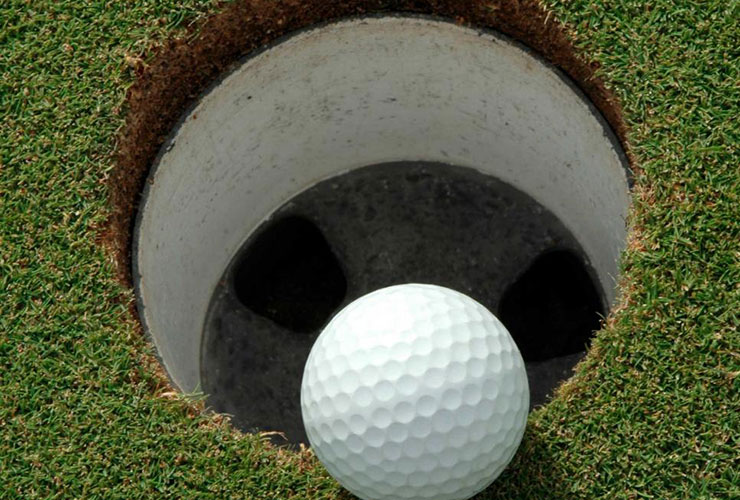Dave J Kahn
If we’re going to be brutally honest, ball fitting is more important than most average golfers think. Yet unlike every other kind of equipment fitting in the game, it’s simply impossible for most average golfers to do properly. Because the right golf ball for you involves a series of metrics unique to you that might involve everything from price to durability, let alone performance, feel and even look on every type of shot you hit from tee to green. Moreover, those are your metrics. The next golfer in line will have a completely different set of demands.
Not only that, it takes time. While an indoor launch monitor may tell you a few things about initial ball speed, launch and spin on your full shots, when it comes to how one ball might perform differently than another, we wouldn’t pay a lot of attention to things like distance, or even maximum height or landing angle. In many cases, those are projections based on a generalised ball flight trajectory algorithm — in other words, certain elements like the aerodynamic effects of a certain dimple pattern compared to another or how a softer ball might react differently than a firmer ball on an off-centre hit. And whatever data that might be generated from a full-swing tee shot or 7-iron approach on a launch monitor, that doesn’t cover the entire spectrum of shots that are going to determine differences that might matter to you.
Certainly, fitting initiatives from the major ball companies are helpful, and Ping’s Ballnamic app is an excellent deep dive to narrow the impossibly large field of golf balls and player types and preferences. But, ultimately, there is no substitute for taking a few leading candidates and putting them through the paces of how you play an actual hole or three.
That’s why a good first step in your search for a new ball should be an honest self-evaluation of your needs measured against your capabilities. We are reminded of the golf ball insider who once asked a bunch of senior golfers why they were playing a tour-level golf ball when a different model might get them a little more distance, higher flight and maybe better accuracy. “Simple,” the leader of the oldsters said. “We know with our limited speed, we’re going to hit the tee ball somewhere out there that’s going to be findable, and then were going to hit a second shot somewhere toward the green. But it’s the next shot, that pitch or chip or bunker shot, that’s going to determine our score. That tour ball gives us the best option to hit that third shot the best that we can.”
Moral of the story: The best ball for you is the one that enables you to enjoy the hole the most by optimising the shot that’s most important to you. For some that may be a big tee shot, for others it could be a low, checking pitch. But the only way anyone finds that out is to get out on the course.
Here are some general guidelines for things to look for in your next ball, from tee to green. (And truth be told, our advice is to start from the green and work your way back. A ball that answers your short-game demands is the best first step toward improving your score.)
PUTTER
Roll long and short putts to give you the sound feedback you need. If aligning the sidestamp is important to you, make sure the look suits your eye.
GREENSIDE
Spend most of your time here, and hit all the short-game shots you normally play. Spin and distance should be consistent and predictable.
HALF-WEDGE
You might not have this shot often, but if you have a controlled, checking shot in your repertoire, you’ll only be able to do it with the right urethane-cover ball.
FULL IRON
Hit shots from a distance you’re confident attacking the green. Watch for trajectory height and whether you can control it. Are well-struck shots stopping the way you want them to?
DRIVER
Given most golfers’ inconsistency, this area might not be a game-changer. If you see something here, make sure you’re not compromised elsewhere.
One final reminder: The least-expensive two-piece balls might be longer than the most expensive multilayer, urethane-cover golf balls. That’s almost exclusively what they’re designed to do. Still, when we had players at two swing speeds hit both kinds of balls, we found the distance advantage was small at best, almost irrelevant. A 110mph swinger found the cheaper, two-piece “distance” ball to be about five yards longer than the more expensive, multilayer urethane cover ball played on tour. But for a more average male golfer swing speed of 90mph, we barely saw a yard difference between the two balls. Where the difference becomes substantial is when you look at greenside spin. The urethane cover ball was spinning 30 per cent more than the two-piece distance balls. That’s the difference between a controllable shot and one where the ball prevents you from getting a well-played greenside shot from stopping quick enough for a short putt.









